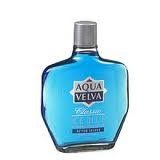

Here are the front of the cockpit section (the part that interfaces with the bow segment) for two Valley sea kayaks: the uppermost photo is a 2008 Valley Aquanaut LV and the bottom photo is a 2005 Valley Nordkapp. Both feature male interlocking pieces and rubber gaskets around the edge. What is different about the two kayaks is the bolt placement. The Aquanuat LV (top) has the two lower bolts placed to the sides, and not directly midline. The Nordkapp (bottom) has the bottom bolt placed right in the midline, at the v-bottom of the kayak. When I test paddled the Nordkapp, the lower bolt area allowed water to leak into the boat; the outside waterline was above the level of the lowest bolt. This would be less likely with the Aquanuat LV configuration.
I replaced the rubber washer (see prior post about rubber washers) in the lower bolt to see if this will provide for dryness. If not, then I will consider some form of modification to the outer rubber gasket. Should that also fail, leaving the lower bolt out (i.e. connecting with only three bolts instead of four) and filling the hole with removeable silicone would be mandatory.
Clip hull 3-piece kayaks, of course, have watertight sections as the clips are on the outside of the hull. Examples would be Rockpool and NDK boats. More on those later.

Excellent exaplanation of the situation, but I would be very hesitant to use only three bolts to hold your craft together. Here's my thinking.
ReplyDeleteFrom an engineering perspective, I believe that your passenger weight is essentially trying to break your kayak in half; the front of the cockpit section sinking while the bow section floats. Total conjecture on my part, but stay with me here.
The single, lower bolt has the largest part to play in keeping the two sections together in the water --- the bottom bolt is in tension, while the top bolt is really in compression. The top one you could possibly do without -- at least until you try to pick your kayak up by the cockpit and the compression and tension situation is reversed.
If this is true, removing the lower bolt will make this situation markedly worse - perhaps even creating a gap between sections (though this is would extreme).
If there is water getting into that lower hole, I agree with your use of a rubber gasket -- you may need to make one that is big enough/thick enough to stop the water (can find a piece of rubber at Lowe's and cut out the right size/shape). Or, the gasket around that section is leaking and ultimately allowing the water to seep between the sections and into that hole.
I do like the top configuration better as the forces would be spread more evenly across the two lower bolts. Just seems better to me structurally. That said, if those bolt holes are below the waterline, that would double your chances of a leak, so there are cons to that too.
Well,
ReplyDeleteyou may use some large diameter hollow screws to add rigitity and strength...